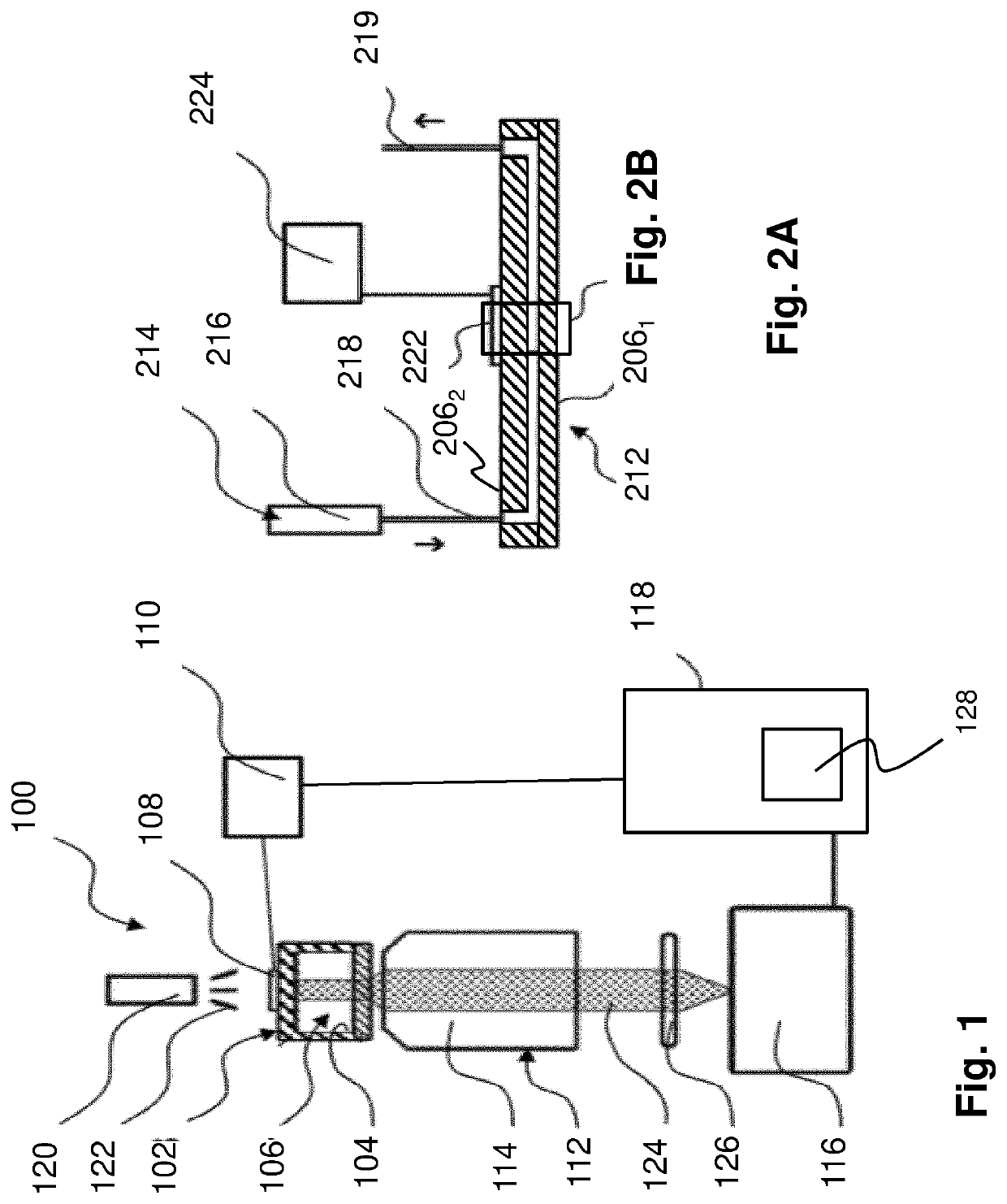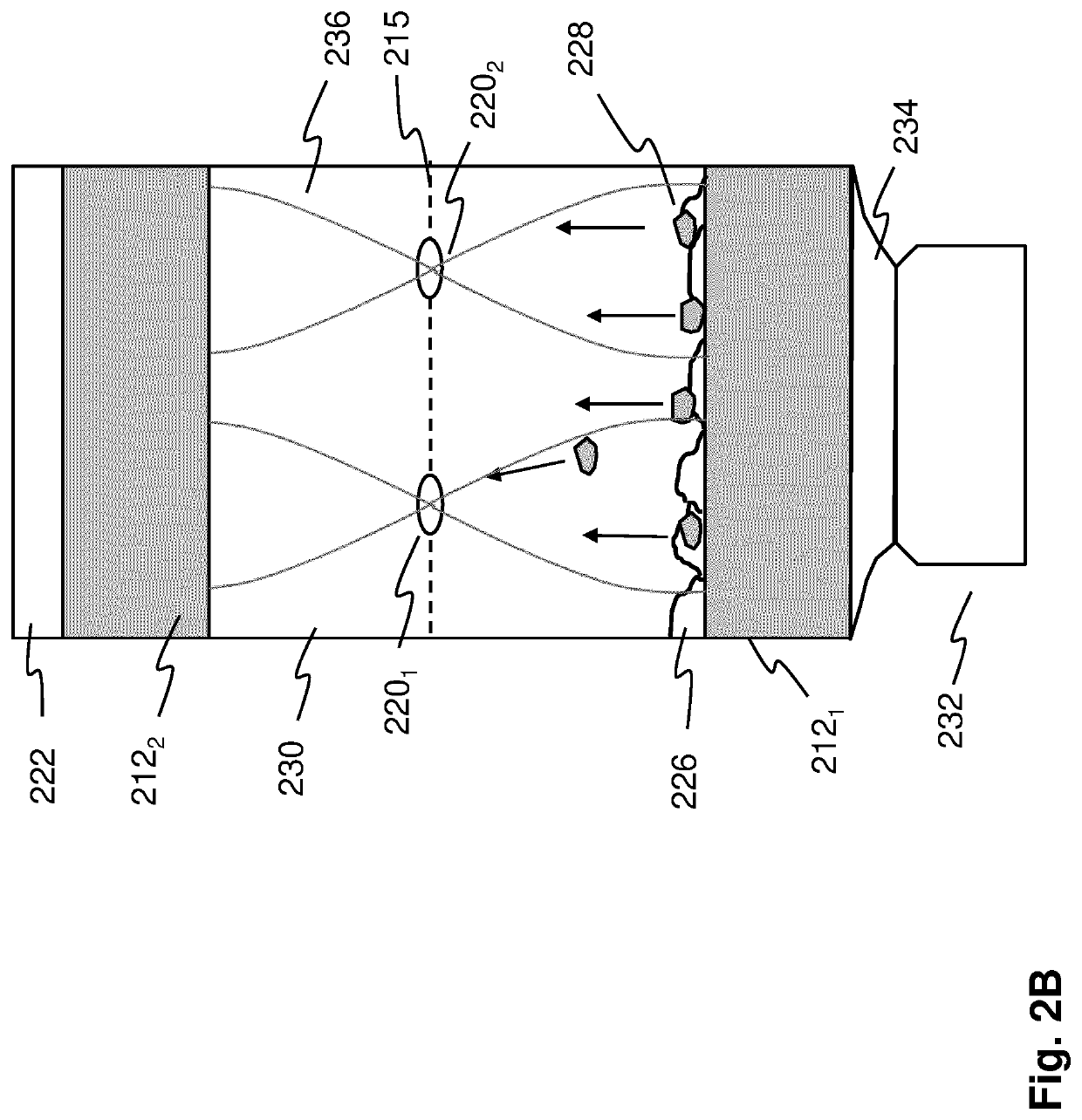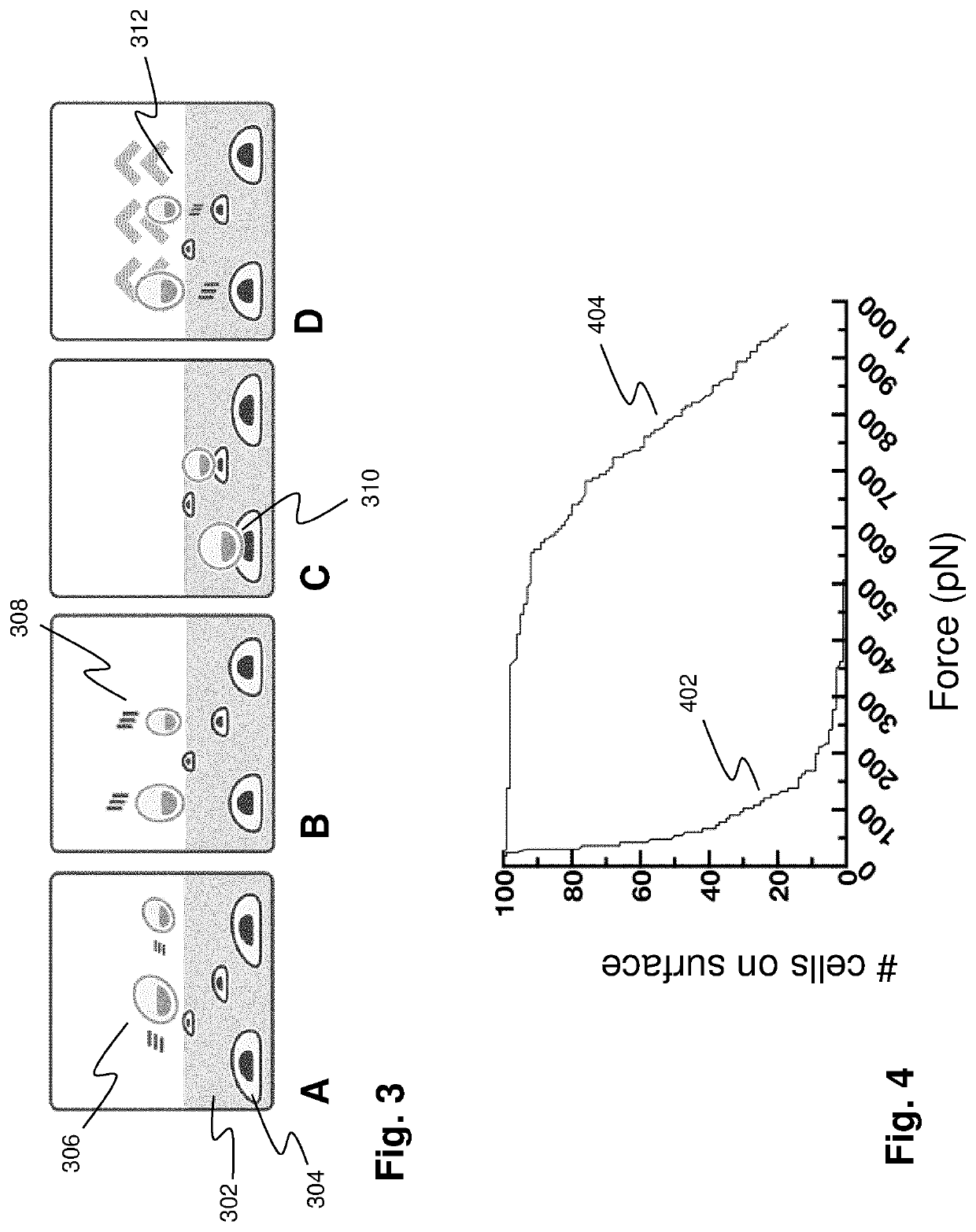Determining interactions between cells based on force spectroscopy
a technology of force spectroscopy and interactions, applied in the field of determining interactions between cells based on force spectroscopy, can solve the problems of poor contrast between foreground and background, complicating the automated cell detection and tracking process, and complicating the process of automated cell detection and tracking
- Summary
- Abstract
- Description
- Claims
- Application Information
AI Technical Summary
Benefits of technology
Problems solved by technology
Method used
Image
Examples
Embodiment Construction
[0067]FIG. 1 schematically depicts a force spectroscopy system according to an embodiment of the invention. The force spectroscopy system 100 may comprise a sample holder 102 comprising a holding space 104 for holding a sample 106 for holding cellular bodies in a fluid medium, e.g. a liquid or a gel. The holding space may be part of a flow cell (also referred to as a microfluidic cell). The system may further comprise a force field generator 108, e.g. an acoustic wave generator based on a piezo element, connected to the sample holder 102 for generating a bulk acoustic wave in the holding space so that a force is exerted on cellular bodies that may be present in the holding space. The force field generator may be connected to a controller 110 so that the force exerted on the cellular bodies can be controlled.
[0068]The system of FIG. 1 may further comprise an imaging system for imaging the processes in the holding space. The imaging system may include a microscope 112 including optics...
PUM
 Login to View More
Login to View More Abstract
Description
Claims
Application Information
 Login to View More
Login to View More - R&D
- Intellectual Property
- Life Sciences
- Materials
- Tech Scout
- Unparalleled Data Quality
- Higher Quality Content
- 60% Fewer Hallucinations
Browse by: Latest US Patents, China's latest patents, Technical Efficacy Thesaurus, Application Domain, Technology Topic, Popular Technical Reports.
© 2025 PatSnap. All rights reserved.Legal|Privacy policy|Modern Slavery Act Transparency Statement|Sitemap|About US| Contact US: help@patsnap.com



